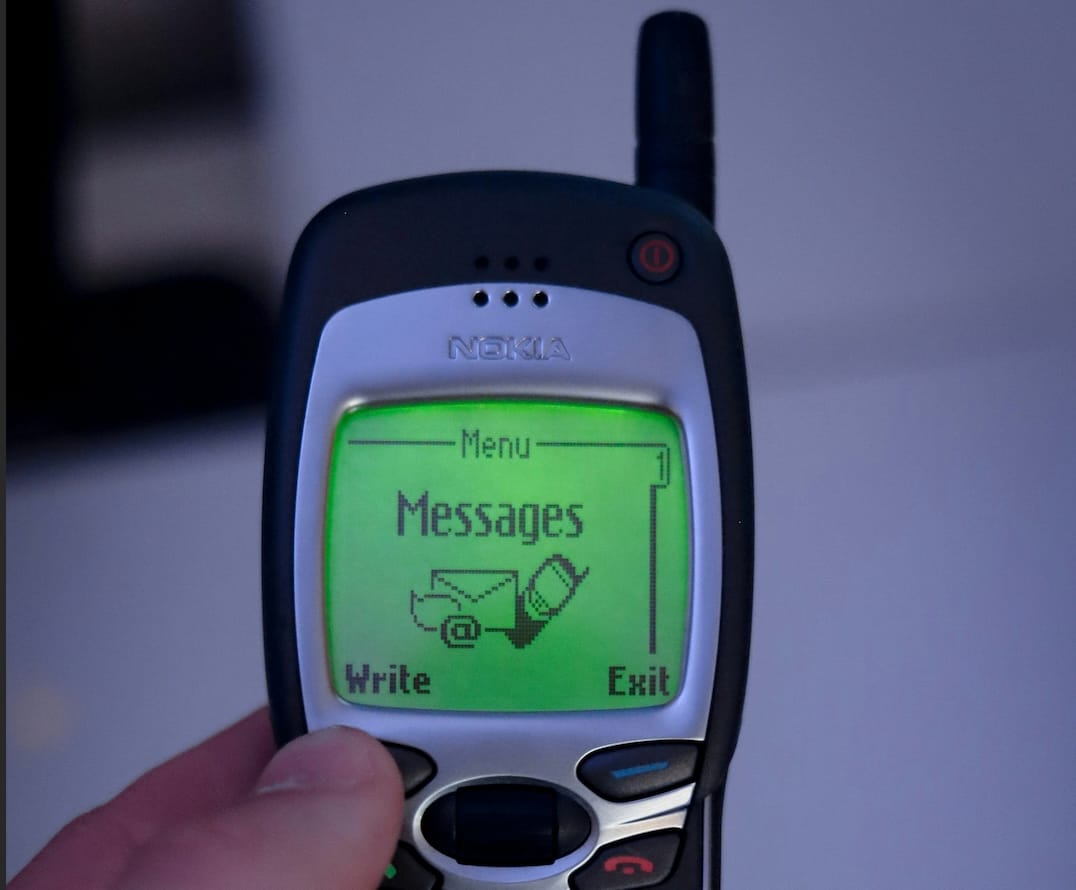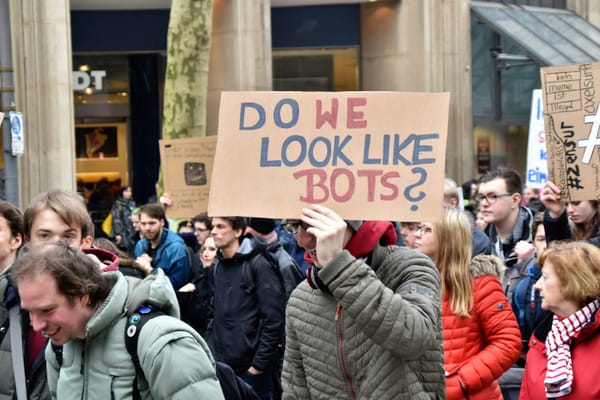Revenge of the text message: A new era for SMS in the age of personalised communication
"A lot of conversations now happen in closed private spaces like Discord or Slack. SMS is well-positioned to support that shift."

Technology has taken many profound leaps forward since British engineer Neil Papworth sent the words "Merry Christmas" in the first ever SMS message on December 3, 1992.
But is this trusty text due to make a comeback in the age of WhatsApp, Telegram and all the other free communications options available to us in 2025?
Subtext is a company dedicated to enabling businesses or individual creators to send text messages directly to their chosen audience, bypassing censors and middlemen to build a direct relationship.
It reports a 98% open rate and 20% response rate, enabling two-way dialogue rather than the old-school "I speak, you listen" model of mass broadcast communications.
To find out more about the return text message (and why it never actually fell out of us), we spoke to Mike Donoghue, Co-Founder & CEO of Subtext.
Can you tell us about the history of SMS messages and where we are in the story right now?
"This is a medium that everyone’s familiar with across demographics. SMS is used by young people, older folks and all different socioeconomic groups. It’s the most commonly used app on most people’s phones. For American consumers especially, and generally across Western Europe too, SMS is something people engage with multiple times a day.
"If you look at the trajectory of the medium, it started in the 90s when phones weren’t exactly built for fast typing, you had to press a button multiple times to get a single letter. It was utilitarian, very peer-to-peer in nature. Then it evolved. Group messaging came in. MMS introduced photos, videos, and other multimedia. Brands started to recognise the value.
"For publishers, artists, creators, and people using our platform, it’s a powerful tool. Because this is the same channel people use to talk to friends and family, it’s a great way to humanise your brand, your content, or your digital subscription. It opens the curtain a bit - it feels more like a conversation with a person rather than just another email in an inbox."
Were SMS messages starting to fall out of use or have they remained popular?
"They never really went away. What you’re seeing now is a kind of adaptation of SMS for a lot of different use cases. For a long time, it was solely peer-to-peer messaging. If a brand entered that space, it felt strange, almost too personal.
"What’s changed is that more brands are starting to realise that even if they’re doing commerce, they can make it more conversational. They can solicit feedback from subscribers or create a more participatory experience within the medium. So you’re seeing an expansion of how it’s used.
"Part of this also comes on the heels of a broader retreat from public social platforms. A lot of group communication now happens in closed spaces like group chats, Discord, Slack, private communities. SMS is well-positioned to support that shift. After all, it’s one of the core ways group chats are facilitated."
Why do you describe text messages as a "safe harbour" for businesses?
"To answer that, let's take publishers or media companies as an example. Historically, if you were doing a good job with SEO, creating valuable content, and structuring your site map properly, you were pretty much guaranteed a certain level of inbound traffic.
"The Gemini release obviously disrupted that. And traditionally, there’s been this idea that if you could register users or at least capture their email addresses, you’d have a direct line of communication. Email felt like a safe channel because it had less algorithmic interference.
"But what we’re seeing now, especially in conversations with major publishers, is growing concern about AI-driven distillation of inboxes. In the past, if you sent an email to someone’s Gmail, they might not open it right away, but you could still count on certain open rates and CTRs - it was a relatively predictable traffic source.
"Now, with AI priorities clearly stated by Google and Apple, who together control around 90% of global email clients, the fear is that they’ll eventually surface only the top 10 things a user 'needs to know' each day. That means people might stop opening individual emails or clicking links altogether.
"So this long-held belief that email capture gives you a hedge against traffic disintermediation is being challenged. People are looking for alternatives.
"With SMS, there’s far less interference and no major tech gatekeeper deciding who sees messages (and when they see it). For publishers, SMS can become a kind of walled garden, with much stronger performance metrics.
"If you can build communities that you’re messaging back and forth with on SMS, you end up with this safe, highly engaged, highly interactive, and nearly guaranteed traffic source. It’s a different kind of channel - but a powerful one."
What has changed since the golden age of text messages?
"There’s been an enrichment of the medium itself. You can do a lot more via SMS now. You can share videos, audio files, thread messages - things that just weren’t possible back in the 2000s or the 90s on, say, a Nokia phone.
"In terms of how brands approach SMS, or their level of sensitivity to it, the big difference for us is that we focus on opt-in only, value-add messaging. If you want to hear from the Washington Post, or Mr. Beast, or Miley Cyrus, or whoever is using the platform, you have to affirmatively consent to receive those messages.
"We work closely with everyone on our platform to help them understand how to use SMS effectively - how to build real value. Because if all you’re doing is sending one-way messages like 'buy this couch' or 'buy this computer', people will eventually opt out. That kind of approach is tired.
"But if you’re creating high-signal, low-noise communication, for example, between a media company and its readers, or between a journalist and their audience, that’s incredibly valuable.
"To put it in perspective: we have 25 million subscribers, and our annual opt-out rate is less than 1%. That means fewer than 1% of our audience unsubscribes over the course of an entire year, which I think is pretty compelling."
Are we living through the end of mass media "blue church" broadcasting, and is text message publishing part of a wider move towards narrowcasting?
"In the 2000s when social referral traffic started to explode, the mindset among media publishers shifted. The thinking became: 'We don’t need to focus on high-quality content or deep engagement with audiences. Our focus is going to be on scale and riding this tidal wave of virality.'
"The business models followed that approach. You saw low-quality ads, pivots to new mediums like video, and the idea that 'We’ll just create whatever Meta wants to see' or 'we’ll produce whatever works best for YouTube" because the goal was simply to generate massive audiences to sustain the business.
"But what’s happened - and this is true for media companies, creators, and artists - is a realisation that quantity is not everything. It’s a vanity metric. Now the focus is on activating and engaging the highest-quality audiences, the biggest fans. The business models have evolved accordingly.
"Media companies are leaning more into consumer revenue initiatives, such as subscriptions. Artists are creating compelling experiences for superfans, because their income is driven more by concert tickets than by streaming numbers. The same shift is happening with creators. For most of them, YouTube alone isn’t a viable way to make a living.
"But if they can convert passive followers into a deeper, more meaningful experience that they control and own, that becomes a much more sustainable business model and a better experience for the fans who truly want to engage, not just passively scroll through TikTok or whatever else."
So can creators make a living simply by sending text messages?
"The beauty of the medium is that it's purposefully lo-fi. You don’t need to overproduce anything. If you’re going to research, draft, code, and deploy a daily email newsletter through Substack or something similar, you’re probably spending a whole day on it, if not more.
"With SMS, it's designed to feel like a peek behind the curtain so doesn’t have to be perfectly polished. It’s about hearing from someone directly. The time investment is minimal. We’re talking maybe 640 characters max, and maybe an hour to craft a message that really resonates, share a link, and hit send.
"But the really compelling interaction happens after you send that message. Your audience can reply. You might see they have questions about an upcoming fight or want to go deeper on a story you wrote. You can respond one-on-one. That’s where this medium shines. It creates a unique, personal experience."
What are people covering via text message?
"We have individual journalists here in the US who cover things like the presidential election or debates. They’ll ask their audience, 'Who performed best?' or 'What are you thinking about the candidates?' They can respond to some directly, or even share collective feedback. That creates a sense of community.
"Compare that to traditional social platforms. If you comment on an Instagram post or on X under a New York Times article about Donald Trump, you have to be ready for public scrutiny. Everything is performative. It’s one of the reasons we see so much polarity and toxicity in social comments. The more of a troll you are, the more attention you get. It’s not always about earnest questions - it’s often just about visibility.
"In our medium, because it’s closed and one-to-one, that performative aspect disappears. People can ask genuine questions they wouldn’t feel comfortable asking publicly. That turns into a really valuable exchange.
"Ultimately, whenever you have a highly engaged audience around a specific topic - whether it’s political news, a football club, or an individual creator - that kind of focused passion performs really well. That could be a big media company like News Corp, or it could be an independent journalist or someone like Mr. Beast.
"I’ll give you an example. A few years ago, someone came to us and said, “Hey, I love what you’re doing, and I want to build a business on Subtext.” He’s a UFC thought leader - a former promoter - and wanted to launch a subscription campaign on the platform. At the time he had a few thousand followers. Not a massive audience, but we figured they might be very passionate.
"He told us he wanted to charge $129 a month. Which seemed like a lot but we thought we'd try it.
"Fast forward to today: he’ll make around $400,000 on the platform this year, just by sending text messages."
Find out more about Subtext here.
Do you have a story or insights to share? Get in touch and let us know.




